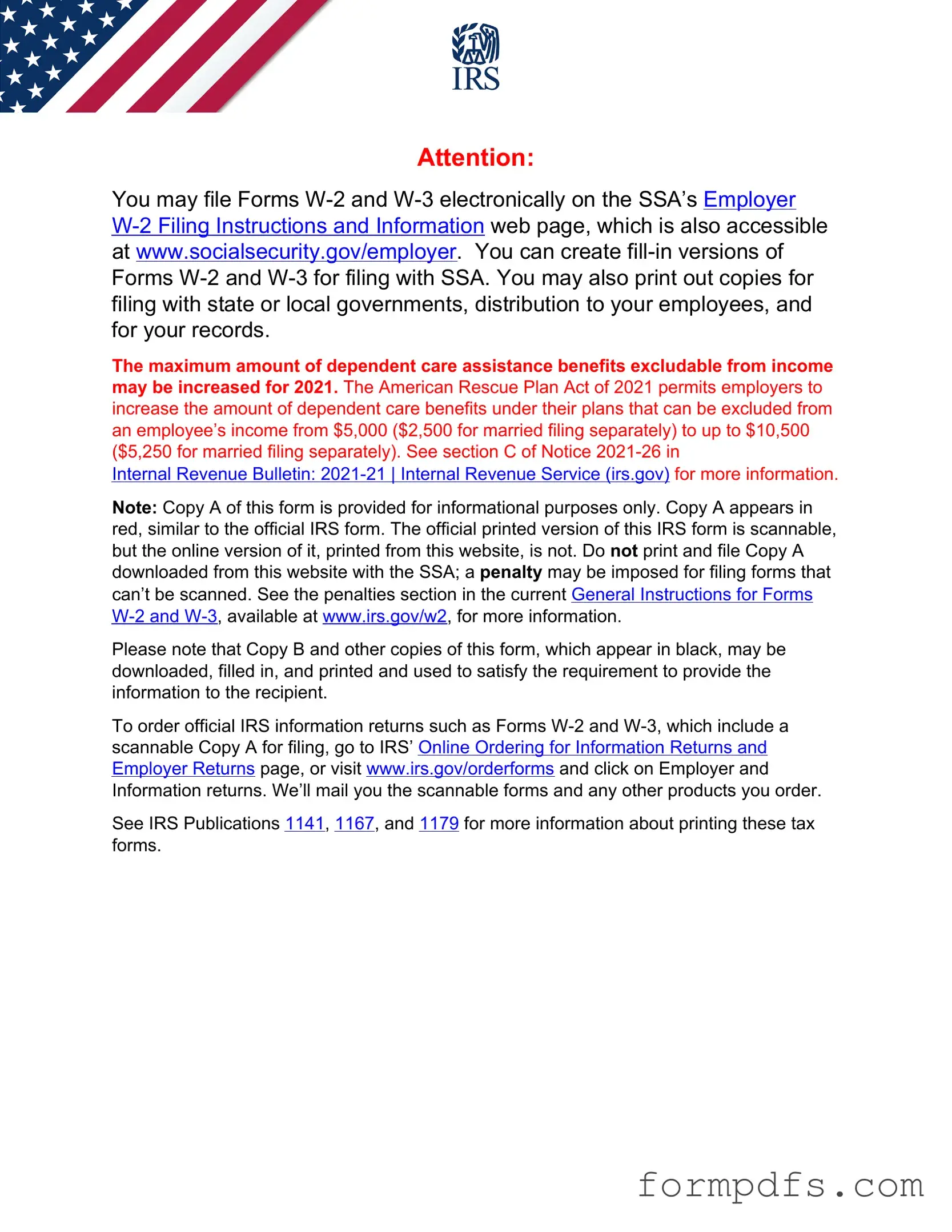What is the IRS W-3 form?
The IRS W-3 form is a transmittal form used to summarize and transmit the information from W-2 forms to the Social Security Administration (SSA). Employers use it to report the total earnings, Social Security wages, and Medicare wages for all employees for the tax year. The W-3 ensures that the information reported on W-2 forms is accurately compiled and submitted to the government.
Who needs to file the W-3 form?
Employers who issue W-2 forms to their employees are required to file the W-3 form. This includes businesses, non-profit organizations, and government entities. If an employer has no employees but has filed W-2 forms for certain payments, they may still need to submit a W-3.
When is the W-3 form due?
The W-3 form is due by January 31 of the year following the tax year for which the W-2 forms are filed. If January 31 falls on a weekend or holiday, the deadline may be adjusted. It’s essential to file on time to avoid penalties and ensure compliance with IRS regulations.
How do I obtain a W-3 form?
The W-3 form can be obtained from the IRS website or through various tax software programs. Employers can also request printed copies from the IRS. It's important to ensure that the most current version of the form is used to avoid any issues during submission.
Can I file the W-3 form electronically?
Yes, employers can file the W-3 form electronically through the SSA’s Business Services Online (BSO) portal. Electronic filing is encouraged as it is often quicker and reduces the risk of errors. There are also software options available that can assist with electronic filing.
What information is required on the W-3 form?
The W-3 form requires several key pieces of information, including the employer's name, address, and Employer Identification Number (EIN). Additionally, it requires totals for the number of W-2 forms submitted, total wages, Social Security wages, and Medicare wages. Accurate reporting of this information is crucial.
What happens if I make a mistake on the W-3 form?
If a mistake is discovered after the W-3 form has been filed, it is important to correct it as soon as possible. Employers can submit a corrected W-3 form along with the corrected W-2 forms. The IRS provides guidance on how to make corrections, and timely action can help mitigate potential penalties.
Where do I send the completed W-3 form?
The completed W-3 form, along with the corresponding W-2 forms, should be sent to the Social Security Administration. The mailing address may vary depending on the method of submission and the employer's location. It is advisable to check the latest instructions from the SSA to ensure proper submission.
